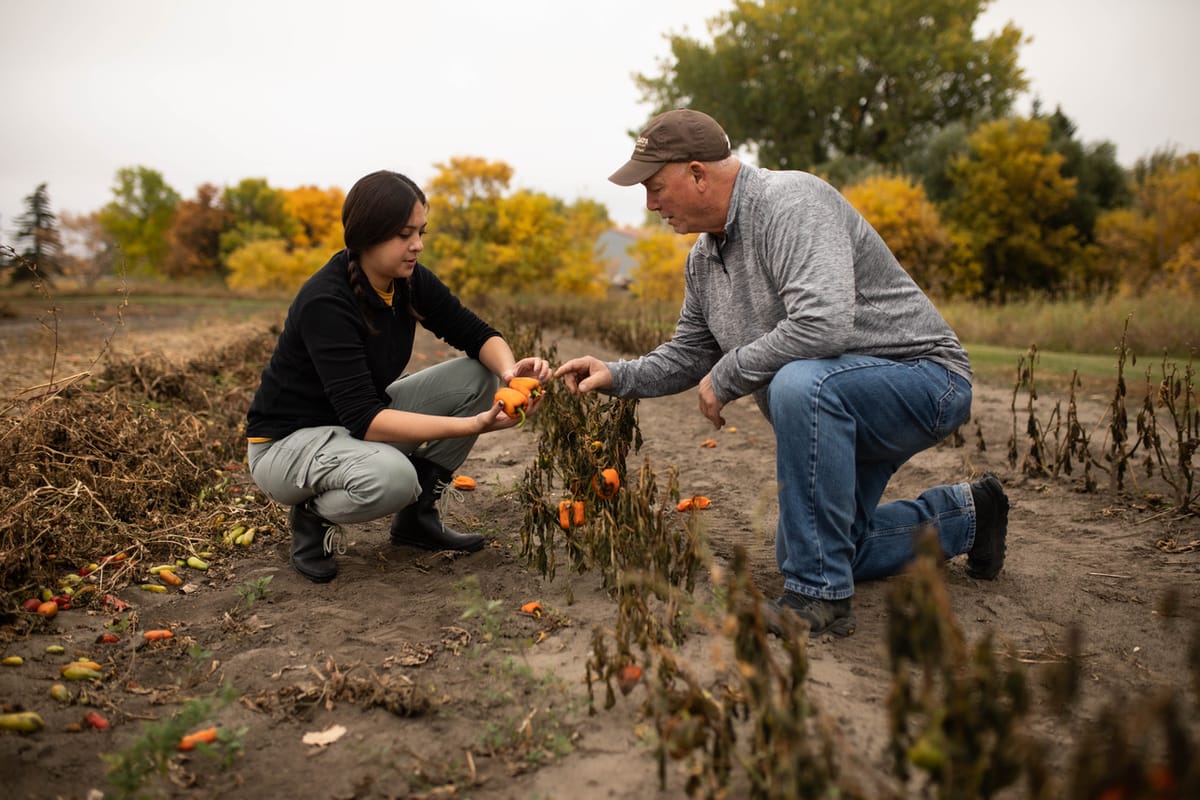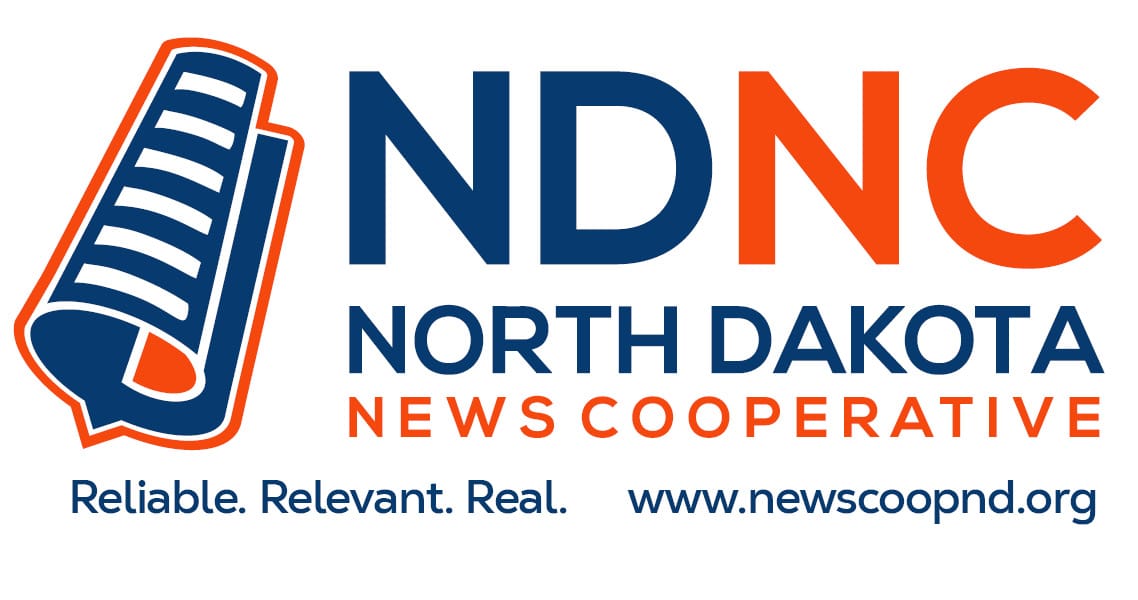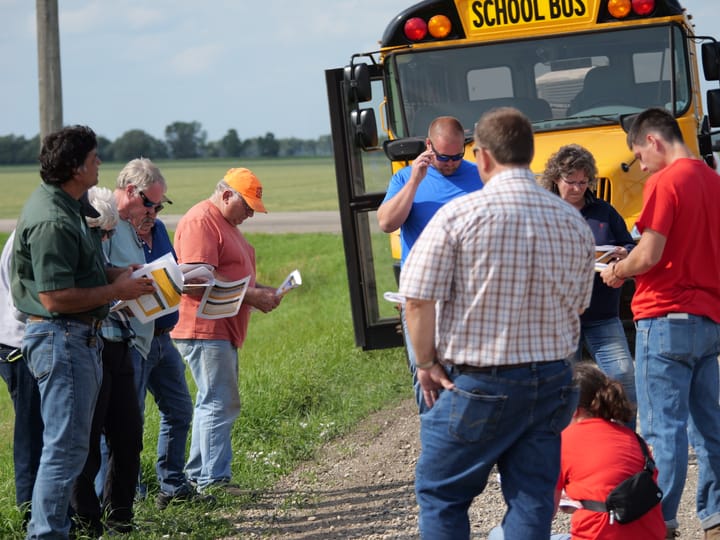Crop insurance reforms needed, some farmers and groups say
North Dakota 2nd only to Texas in insurance payouts over two decades

Federal crop insurance subsidies grew to record highs last year and a growing chorus of farmers and other groups say the system needs reform.
They say a lack of transparency about where the money goes and a system that favors a small segment of farmers on large commodity crop farms unfairly puts smaller, beginner and more diversified farmers at a disadvantage.
Todd Leake, who farms 2,000 acres near Emerado just west of Grand Forks, said the crop insurance program, as currently constructed, is unfair to smaller and more diversified farms like his and said that the premium subsidy – the portion covered by taxpayers - should be capped.
“There’s no limitation on how much crop insurance subsidy you can get,” Leake said. “It could be millions and millions, but for a smaller farmer it is much less. So larger operations are getting their risk management paid for by the federal government to an unreasonable degree.”
Another impact the current system has had is inflated land prices leading to larger farms either buying up or renting out more land from smaller farmers around them, he said.
“They can keep growing and swallowing up land at the expense of family farms,” Leake said. “They’re getting their land taken out from under them because the big operations can’t lose.”
In the past two decades, crop insurance payouts have grown from just $2.96 billion in 2001 when the federal program started, to a record $19.13 billion in 2022.
Increasing fluctuations between years of drought and years of heavy precipitation as climate swings intensify have increased the number of claims.
Only an average of 20 percent of farms across the country can access crop insurance, and this favors commodity crops, including those grown primarily for energy use.
Calls for reform
There are several bills circulating in the U.S. Congress aimed at reforming the crop insurance program – and if not individually passed – they could make their way into how that insurance system is reformed in the next Farm Bill.
Legislation under consideration largely focuses on transparency, caps on amounts received by individual farmers, including more support for beginning farmers and ranchers as well as support for sustainable agricultural practices like cover crops.
On the tax side, the group Taxpayers for Common Sense is pushing for greater transparency since current laws do not make details on what individuals and businesses receive in crop insurance subsidies available to the public.
Taxpayers end up paying around 65 percent of the costs of the insurance through the premium subsidy.
The Congressional Budget Office estimates the program will cost taxpayers around $16.3 billion in 2023 and at least $10 billion per year over the next decade.
“Crop insurance subsidies are currently non-transparent, so we don’t know who they go to,” said Sheila Korth, a senior policy analyst with Taxpayers for Common Sense based in Nebraska. “There’s no limits if you’re a billionaire or a millionaire or if you live on a farm or not.”
Korth said it would be “nice to know, from a public good perspective, and a taxpayer perspective” where the money is going and to ensure that payments are not going to anything unnecessary.
Former legislator and tax reform advocate Rick Becker said the crop insurance system is “fraught with problems” and that it leads to inflated prices of agricultural land.
“When you have a guaranteed income, especially for specific crops, with no loss, that suddenly makes land more valuable,” Becker said.
“And so what we're seeing is, of course, farmers expanding but the biggest ones are the ones that can afford to absorb that cost,” he said. “So the bigger ones get bigger and the new farmers and the young farmers are squeezed out.”
Bernt Nelson, an economist at the American Farm Bureau Federation and native North Dakotan who continues to participate in a family farm here, said with the push for transparency, reforms need to be careful not to “create opportunities for there to be winners and losers” adding that calls for full transparency could undermine privacy.
“The idea is to balance that so we can share as much information as possible without putting our individual farmers or farm members at risk,” he said.
Another group, the National Sustainable Agriculture Coalition, hopes reforms can help level the playing field for smaller, beginning and more diversified farming operations through transparency requirements and payment limits on what each farm or acre could get.
While Leake suggests the system has already set a winners and losers scenario, Nelson of the Farm Bureau said any reforms capping payouts could end up doing just that with unintended consequences.
“I’m not saying it’s not possible to create a system regarding that, but we have to be really careful when presenting any kind of cut off, whether it’s an acreage cut off or price increase cut off,” Nelson said.
Either way, some believe many options should be on the table.
“It would be nice if we could have a good discussion about how we can reform it without pulling the carpet out from underneath farmers that are currently using it,” Becker said. “In my opinion, it's not their fault. They're not the bad guys here.”
Fewer options for hobby, specialty farms
For farmers like Marvin Baker, crop insurance could make sense if it was less complicated and not cost prohibitive. He grows a variety of produce on three acres of land near Carpio just northwest of Minot. The produce is sold to local residents and at farmers markets.
He said he’s looked into crop insurance but it would have ended up costing too much.
“It’s either very costly or impossible to get crop insurance for what we do,” said Baker, current president of the North Dakota Farmers Market and Growers Association.
With the growth in farms under 15 acres over the past two decades, he sees a need that’s not being addressed by the system or the insurance companies at a time when locally sourced food is gaining in desirability.
Nelson of the Farm Bureau said a lot of times it is a coverage issue for smaller farmers with specialty crops that may not have an insurance product yet. He said he hopes that is changing and acknowledged that it takes time to develop those products.
“We're always pushing for more covered products and to do research on creating insurance products that are actuarily sound as a business product,” Nelson said. “Specialty crops are naturally an area that has a lot of coverage issues.”
Mentioning North Dakota, he said the state has the second highest amount of specialty crop coverage in the country, though these policies are mostly geared toward edible beans in the northern counties.
North Dakota payouts
Farmers in Texas, followed by North Dakota and Kansas, have been the biggest beneficiaries of crop insurance payouts in the past two decades, receiving over 30 percent of payments.
North Dakota alone accounted for 9 percent of all payouts over that period, with farmers receiving nearly $14 billion.
According to analysis of USDA data by the Environmental Working Group, $11.814 billon of that came from five weather related causes with excess moisture, drought, hail, and heat having the most impact in North Dakota.
“North Dakota is just especially vulnerable it seems to these extreme weather events,” said Anne Schechinger, Midwest director for EWG.
Much of that is coming from excess moisture, with North Dakota receiving the most payments out of all states for that category at around $6.8 billion, compared to the next highest state Minnesota which got $3.5 billion, according to the data EWG analyzed.
While the top county nationally getting payouts for excess moisture was in South Dakota, the next nine are in North Dakota. Of those Cass, Dickey and Barnes saw the highest excess moisture payouts.
“They’re a big part of the Prairie Pothole region, so a lot of farms are in former wetlands, which lends itself to more excess moisture payments,” Schechinger said.
Opting out of the system
For more than ten years farmer Gabe Brown has not participated in federal crop insurance programs, but that’s largely been out of choice rather than necessity.
His “very diversified” 6,000 acre ranch northeast of Bismarck, as he calls it, raises grass finished beef, lamb, pastured pork, honey and a rotates through variety of grain crops, depending on whether the year tends toward drought or heavy moisture.
Like others with diversified crops, obtaining crop insurance is either difficult, doesn’t make sense for their operations, or is seen as unfairly skewed under the current system.
Brown’s Ranch is highly profitable, he said, and crop insurance would end up being too constraining for farms like his. He said the insurance system has evolved to favor farmers planting whatever crop has the most favorable insurance structure.
“That’s why the Corn Belt is all corn and soybeans,” Brown said. “That’s why North Dakota is becoming more corn, soybeans and wheat. Those are the crops that get the biggest revenue insurance.”
Brown’s ranch also hasn’t used fertilizer, other than “what drops out of the back end an animal while their grazing” since 2007, he said.
A crop insurance system that favors commodity crops ends up negatively impacting soil resources, he said, because most farmers only make more money by getting more yield.
This leads to them using “more and more synthetics and chemicals, which degrades the soil and so you're in this negative tailspin,” he said.
Brown, who has been able to achieve profitability while moving toward a more diversified, regenerative farming operation, says a wider holistic approach also needs to be taken with any reforms to the crop insurance system.
“It’s a flawed system to start that only perpetuates the current model,” Brown said.
The North Dakota News Cooperative is a nonprofit news organization providing reliable and independent reporting on issues and events that impact the lives of North Dakotans. The organization increases the public’s access to quality journalism and advances news literacy across the state. For more information about NDNC or to make a charitable contribution, please visit newscoopnd.org.



